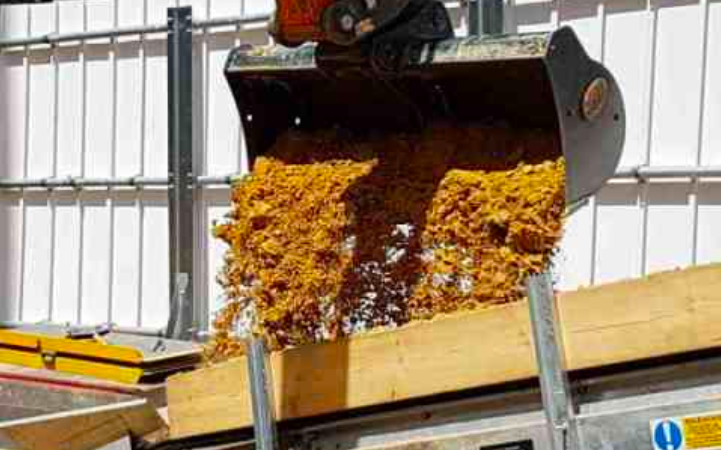- Amanda
- February 28, 2019
How to load a conveyor

Conveyors are used across a huge range of industries, from mining to agriculture, and serve a vital purpose in the transportation of materials. However, there is a right and wrong way to use them and getting it wrong can lead to increased belt wear, material waste and unnecessarily high maintenance costs.
In this guide to loading conveyors, we’re going to cover some best practice tips to help keep your equipment in top condition and improve efficiencies. Stay tuned to learn more.
For a quick quote for conveyor belt hire or purchase, call us now on 0808 501 5127.
How to manage different loading methods
Before we get into some best practice points, let’s discuss an overarching principle that you should always be mindful of different load types. Loading conveyor equipment can be done in one of two main ways: by hand or by machine. Each method places different levels of stress on your belts and will require its own approach.
When loading conveyor systems by hand, you should be able to place material directly onto the belt with no issue, as any variations in load are typically small enough to not place any undue stress on your machinery.
However, if you’re loading conveyors using a wheeled plant or an excavator, you should opt for a larger belt fitted with a flared large capacity bulk feed hopper. This provides an area that can take the initial weight of material and contain it while directing it towards the centre of the belt to be transported away efficiently.
Four best practices to follow when loading a conveyor
Correct loading of your belts can reduce wear and downtime, ensure better protection of your materials or stock and improve operational efficiencies. Here are our top three best practice tips for getting it right.
1. Ensure your hoppers, skirting and side guides are placed correctly
Our first tip is to make sure that your hopper and side guides are correctly placed. Your hopper is the basin-like structure which feeds material onto the belt and the side guides are positioned at the edges of the belt, preventing material from spilling over the sides of the belt.
A misaligned hopper or side guide can lead to material falling off the edges of the belt or even cause excessive wear on the belt’s surface. You should make sure your hopper is mounted correctly over the belt and that it is directing your material towards the centre of the belt. Side guides should be positioned at the edges of the belt, and if you have skirting on your conveyor, these should be clamped in place allowing the belt to run underneath. Remember, if your hopper can control the transfer point by directing all material towards the centre of the belt, then you shouldn’t need to worry about material spillage or materials getting under the belt.
2. Identify the loading zone
Loading zone can also make a massive difference to the lifespan of your belt. Loading conveyors should always be carried out in front of the tail pulley, where the belt is troughed on both sides to avoid spillage and ensure material alignment where it is as level as possible.
Loading your belt when it’s inclined can lead to increased vibrations and shorten its lifespan.
If you are loading large amounts into your conveyor at once, or if your conveyor is handling heavier materials at high throughputs, then you will need to ensure that impact rollers are in place under the belt. Otherwise, you will risk parts failing resulting in damage to your conveyor.
3. Trickle feeding
Our final tip for loading a conveyor is trickle feeding. This involves slowing down the pace of loading to reduce the impact of the material on the belt. Loading too quickly or all at once can damage the belt or result in spillages.
The best course of action is always to slow down and give the conveyor more time to handle the load; it will reduce wear and prolong its lifespan.
Looking for a new conveyor system? Get in touch with a member of the Coveya team today!
Now we’ve covered best practice for loading conveyors, is your conveyor equipment up to the task? Get your hands on all the conveyor machinery you need with turnkey conveyor belt hire from Coveya.
To discuss your needs and get a quote, just reach out to our friendly team. Call us now on 0808 501 5127, email us at support@coveya.co.uk or fill out our contact form here.


